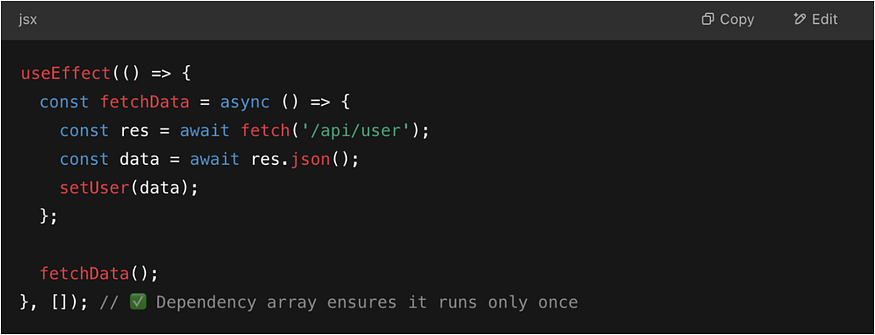useEffect() is that one hook every React dev uses and every React dev breaks at least once.
If you’ve ever caused an infinite loop, forgot to clean up a listener, or watched your API call fire 4,000 times that means you’re not alone. 👀

But when used right, useEffect() can be a powerful tool for managing side effects, syncing state, and structuring logic cleanly.
Here’s a real-world example 👇
✅ We’re fetching API data when a component mounts
✅ No double calls
✅ No stale state
✅ No memory leaks
Plus, we’ll show a screenshot of what the component state looks like after load, so you can visualize how things flow.

🧠 Bonus: We also included 3 mistakes we see all the time in the wild:
- Missing the dependency array
- Incorrect dependencies (👋 setState functions!)
- Forgetting cleanup for subscriptions or timers
At @Techlusion, we work with dev teams to:
- Audit React apps for hook hygiene
- Refactor messy state logic
- Help teams build scalable components from the start
Because using useEffect() isn’t about being clever — it’s about being clear.
Over to You:
What’s the worst useEffect() bug you’ve ever created?
👇 Drop your horror story or favorite pro tip — we’re all ears (and side effects).





.png)
Comments